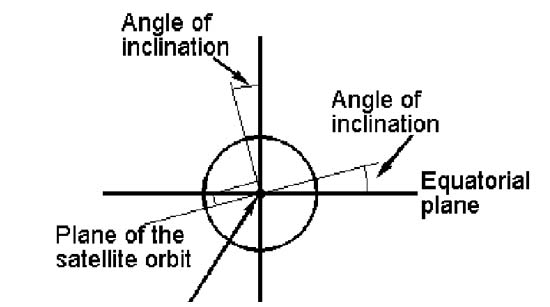Published: 01:06 AM, 13 May 2018 Last Update: 01:08 AM, 13 May 2018
Benefits of Bangabandhu-1 satellite

There are many different satellite orbits that can be used. The ones that receive the most attention are the geostationary orbit used as they are stationary above a particular point on the Earth.
An orbit is a regular, repeating path that one object in space takes around another one. An object in an orbit is called a satellite. A satellite can be natural, like Earth or the moon. Many planets have moons that orbit them. A satellite can also be man-made, like the International Space Station.
Number of satellites in the sky: About 1738 satellites according to the August 2017 update, both government and private. There are 4635 satellites (UNOOSA) currently orbiting the planet; an increase of 8.91percent compared to 2016. Russia launched the first satellite, Sputnik 1, in 1957. The oldest one still in orbit, which is no longer functioning, was launched in 1958.
Size of Satellite: Size varies. Communication satellites can be as big as a small school bus and weigh up to 6 tons, the Federal Communications Commission says. Most weigh a few tons or less. Some that are used briefly are 4 inch cubes and weigh about 2 pounds.
Position of Satellites: Satellites that stay above a location on Earth are in geosynchronous Earth orbit, or GEO. These satellites orbit about 23,000 miles (37,015 km) above the equator and complete one revolution around Earth precisely every 24 hours. Satellites headed for GEO first go to an elliptical orbit with an apogee about 37,015 km. Firing the rocket engines at apogee then makes the orbit round.
Geosynchronous orbits are also called geostationary. A satellite that orbits parallel to the equator has a zero-degree orbital inclination. A satellite in a polar orbit has a 90-degree inclination.Geostationary satellites are generally sized to stay on orbit 15 years.
Functions of Satellites: According the UCS the main purposes for the operational satellites are:Communications: 742 satellites, Earth observation: 596 satellites, Technology development: 193 satellites, Navigation/Positioning: 108 satellites, Space science: 66 satellites, Earth science: 24 satellites, Space observation: 9 satellites. Although, it should be noted that some of the satellites have multiple purposes.
Countries have launched/operate satellites: According to UNOOSA 70 countries have launched satellites, although this is slightly complicated by the fact that a number of satellites have also been launched by various institutions such as the European Space Agency.
In terms of countries with the most satellites, the USA significantly leads the way with 803 satellites, almost four times as many as China who is next with 204 and followed by Russia with 142.Thailand has four satellites and shares in another, the scientist group says.
Fuel System: Most satellites orbiting the Earth using hypergolic fuel/oxidizer combinations (meaning, they combust when they contact each other. For the large geostationary birds I operate, this means Mono methyl hydrazine (MMH) for the fuel and Nitrogen Textroxide (N2O4) for the oxidizer.
Inactive satellite:The oldest active satellite is the Amsat-Oscar 7 communications satellite which was launched 43 years ago today! (15th November 1974). Old satellites can pose a risk for collisions with active ones, so there are rules and recommendations to avoid a buildup of junk in space.
Satellites that fly below a certain height are supposed to be put in an orbit that will make them fall to Earth and burn up within 25 years. At high altitudes, they are to be boosted up to still higher orbits to get them out of the way.
Circular and elliptical orbit definitions: A satellites orbit the Earth in one of two basic types of orbit. Circular satellite orbit: For a circular orbit, the distance from the Earth remains the same at all times. Elliptical satellite orbit: The elliptical orbit changes the distance to the Earth:

Angle of inclination: Not all satellite orbits follow the equator - in fact most Low Earth Orbits do not. It is therefore necessary to define the angle of inclination of the satellite orbit. The diagram below defines this:
Bangabandhu-1 satellite: Bangabandhu Communication satellite is the first satellite of Bangladesh which was launched using vehicle SpaceX and Falcon-9 from the Cape Canaveral launch pad on 12 May 2018 and it will start its commercial operation from July 2018. Bangabandhu-1 would take ten days to reach its orbital slot at 119.1 degrees East.
This satellite will bring enormous development and uninterrupted telecommunication System in Bangladesh especially in television, telephone and Internet service which Bangladesh usually purchase from overseas.
At present Bangladesh is spending annually more than $14 million on satellite rent to ensure connectivity of television, radio, telephone and Internet. So this satellite will make Bangladesh self-contained and Bangladesh will also earn some foreign currency by broadcasting service.
India and Pakistan have their own satellites; Sri-Lanka is in queue. So Bangladesh rent service to Nepal, Myanmar or Bhutan and may earn more than $50 million per year.
Finally, communication system of Bangladesh will get new progression of development. This satellite will give Bangladesh a long term service to a large scalability, global availability, reliability, versatility and super performance. Some sectors like telemedicine, e-learning, e-researches, video conference, defense and disaster management system will be improved for this satellite in Bangladesh.
The writer is Deputy General Manager at MJL Bangladesh Limited




